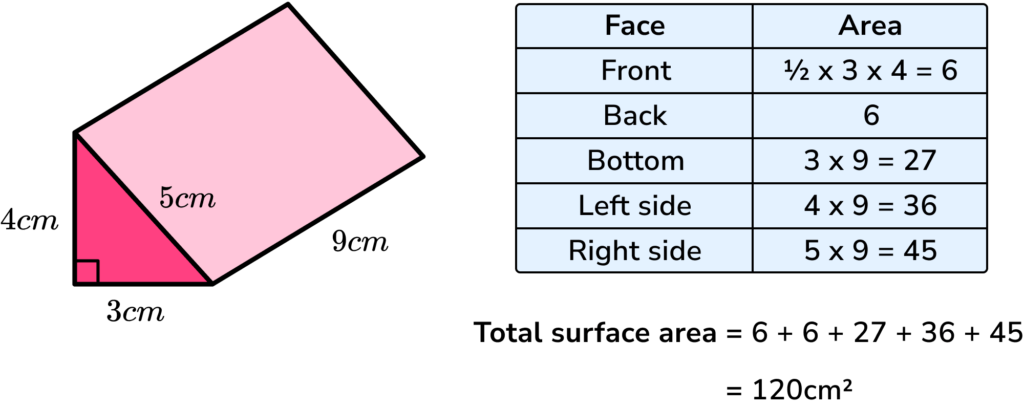

Length * Triangular base area given two sides and the angle between them (SAS) If you know the lengths of all sides, use the Heron's formula to find the area of the triangular base: Length * Triangular base area given three sides (SSS) It's this well-known formula mentioned before: Length * Triangular base area given triangle base and height Our triangular prism calculator has all of them implemented. A general formula is volume = length * base_area the one parameter you always need to have given is the prism length, and there are four ways to calculate the base - triangle area. And we would still result in the same answer, 688 square centimeters.In the triangular prism calculator, you can easily find out the volume of that solid. So we would have rounded to be 688 square centimeters. So we have 43.03 times 16, which gives us 688.48, which is exactly what we got before. So the distance between these two triangles would be 16.


So here’s our other triangle, the other base. Now the height, the height of a prism is the distance between the bases.
#Find surface area of triangular prism formula plus#
So we have 10 plus 15 plus 18.03, giving us 43.03. So in order to find the perimeter, we need to add up all of the sides. We could have used the formula for lateral area, which is the perimeter of the base times the height of the prism itself. Now there’s also another way to do this problem. Since the four is less than five, it will keep this eight an eight, resulting in 688 centimeters squared because this is an area. However, it says to round to the nearest square centimeter. So we need to multiply and then add these together. And lastly, we have a 15-by-16 rectangle. And we find the area of a rectangle by length times width, so 10 times 16. So let’s write out all of the areas that we need to find. There’s one more rectangle, the one on the bottom. So here we’ve recognized the two rectangles we need to find the area for to find our lateral area.

So we can go ahead and label that on our diagram. So 100 plus 225 is 325.Īnd now we need to square-root both sides, which is about 18.03. And we can call the hypotenuse 𝑥, because the Pythagorean theorem states the square of the longest side, the one across from the 90-degree angle, is equal to the sum of the squares of the shorter sides, the 10 and 15. So we can use the Pythagorean theorem to find it.ġ0 and 15 would be the legs. But we do know we have a right triangle with sides 10 and 15. And that’s a 16 by - we actually don’t know that length. We also need to find the area of this rectangle. So the area that we need to find will be this rectangle, which is a 10 by 16, because we know this length is 16. So the lateral area will be the area of the sides excluding the top and bottom, which are the bases, the triangles. So here we have the triangles as our bases. And the bases are what distinguish what kind of prism it is. This is a triangular prism.Ī prism is made up of rectangles and its two bases. So here it’s not the top and bottom because the bottom actually isn’t the base. Lateral area is the surface area of the sides excluding the top and bottom. Find the lateral area of the given prism to the nearest square centimeter.


 0 kommentar(er)
0 kommentar(er)
